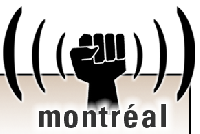 |
 |
 |
 |
 |
 |
|
 |
 |
 |
 |
 |
 |
 |
Régions du Québec |  |
 |
 |
|
 |
 |
|
 |
 |
|
 |
 |
 |
 |
 |
 |
Rubriques |  |
 |
 |
|
 |
 |
|
 |
|
 |
 |
 |
Gloria's Economy: NOT WORKING
Today, Philippine President Gloria Arroyo will again address the Congress to give a report on the achievements of her government, and at the same time express her primary focus for the next year. As she did during her previous State of the Nation Address (SONA) speeches, she may yet again boast the economic feats of her administration, including the strengthening of the peso and the recent booming of the stock market.
But despite these pronouncements, despite the propaganda backing of Arroyo’s economic team, the obvious truth cannot forever be hidden from the masses and economists alike – Arroyo’s economy is not working.
The Freedom from Debt Coalition (FDC) continues to assert that Arroyo’s economic governance is defective in all significant aspects of human development. Her so-claimed economic growth never really benefited the poor majority, and had only resulted into pushing the common Filipino further into a struggle for desperate survival.
Let us look at the features of Arroyo’s economy:
Arroyo’s economy is debt-driven
= Biggest borrower. As of March 2007, Arroyo already borrowed an amount of P3.24T, compared to the P1.51T combined borrowings of the Aquino, Ramos, and Estrada administrations.
= Most religious debt payer. As of 2005, Arroyo also achieved the record of being able to pay P2.38T in debt service, dwarfing P1.81T of the combined Aquino, Ramos, and Estrada administrations.
Spending Policy is Pro-creditor, Anti-development
= Debt service above all. Interest payments as percent of GDP grew to 5.5% during the last two years (2005 and 2006) from 3.6 % in 1999. In 2006, the amount needed to service government’s debt (P784.5B) is almost equal to the tax collected (P785.2B, January to November). Debt service ballooned from an average of 19.5% of overall government spending in the time of Estrada to 26.8% under Arroyo.
- In the 2007 budget alone, P622B was earmarked for debt service (interest and principal) while education and health received merely P146B and P13B respectively.
= Mis-spending. This policy had only become possible through abject neglect of other sectors. Real per pupil spending (200 prices) dropped from P5,830 under Estrada to P5,467 under Arroyo. Real per capita health spending dropped from Ramos’ P321 to Arroyo’s P303.
Revenue Policy is Pro-rich, Anti-poor
= Regressive taxation and narrowing of the tax base. Since Arroyo failed to tax the rich due to massive tax evasion of corporations, Arroyo instead opted for consumption taxes (E-VAT, R-VAT) practically targeting the common man’s income.
= Accelerated privatization as a palliative for poor revenue collection. Not being able to achieve its tax and revenue collection targets, the Arroyo regime resorted to the unabashed selling of government’s assets, like the TRANSCO.
= Padding revenues through increased borrowings. Arroyo had been able to cheat her revenue reports by borrowing more than what was needed and reporting the resulting surplus as revenue.
Clearly, this kind of an economic policy only resulted to a decline of social development and consequently, of human productivity. Arroyo may have thought that she could “cheat
| Attachment | Size |
|---|---|
| FDC-Gloria-Economy.jpg | 0 bytes |
 |
 |
 |
 |
G20 Special |  |
 |
 |
|
 |
 |
|
 |
We offer many independent reports and testimonies...

List of actions held during this "counter-summit" in Toronto You may also want to visit these alternative media in Toronto: G20 Alternative Media Centre http://2010.mediacoop.ca Media Co-op Toronto http://toronto.mediacoop.ca Toronto Community Mobilization www.attacktheroots.net |
 |
 |
 |
 |
 |
 |
 |
CMAQ: Vie associative |  |
 |
 |
|
 |
 |
|
 |
 Quebec City collective: no longer exist. Get involved ! |
 |
 |
 |
 |
 |
 |
 |
 |
|
 |
 |
 |
Ceci est un média alternatif de publication ouverte. Le collectif CMAQ, qui gère la validation des contributions sur le Indymedia-Québec, n'endosse aucunement les propos et ne juge pas de la véracité des informations. Ce sont les commentaires des Internautes, comme vous, qui servent à évaluer la qualité de l'information. Nous avons néanmoins une
Politique éditoriale
, qui essentiellement demande que les contributions portent sur une question d'émancipation et ne proviennent pas de médias commerciaux.
This is an alternative media using open publishing. The CMAQ collective, who validates the posts submitted on the Indymedia-Quebec, does not endorse in any way the opinions and statements and does not judge if the information is correct or true. The quality of the information is evaluated by the comments from Internet surfers, like yourself. We nonetheless have an
Editorial Policy
, which essentially requires that posts be related to questions of emancipation and does not come from a commercial media.


